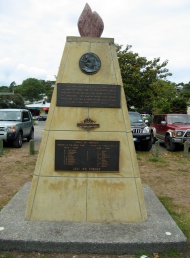Articles
A frontier of chaos?

In the years before the signing of the Treaty of Waitangi, relations between Māori and Europeans were marred by a number of high-profile incidents.
- Page 7 - KororārekaThe missionaries divided the Europeans who came to New Zealand in the early 19th century into two groups: the agents of virtue (themselves) and the agents of vice (almost everyone
Township on the inner reaches of the Bay of Islands. Russell is an historic spot, dating from the early 19th century and known until the early 1840s as Kororāreka. In the 1830s it was a lawless trading centre where whalers, seafarers and merchants mixed with adventurers, deserters and escaped convicts from Australia. Towering above the township is Maiki Hill, topped by a flagstaff. In 1844–45 its signal flagstaff was cut down by Māori four times in a protest against the government. The action led to war. In 1845, during this conflict, Kororāreka was attacked and many buildings destroyed. One of the oldest church sites in the country is Christ Church. First built in 1836, it survived the sacking of Kororāreka in 1845. It was transformed to its current design in 1871. The churchyard has been used since 1836 and some well-known people are buried there. They include the Hokianga chief and government supporter, Tāmati Wāka Nene, and casualties of the naval vessel Hazard, involved in the 1845 war. Another early building is the Marist mission printery, known as Pompallier.







